There are different pathogens of black spot that affect different plants. For example, roses are attacked by the fungus Marssonina rosae, as a result of which black spots form on their foliage, and pathogenic bacteria of the genus Syringae infect lilacs.
Content
Features of black spot
If the plant is affected by black spot, then this can be understood by the formed specks of a dark brown, almost black shade, they can have light either edges or the middle. Sometimes oblong or rounded swellings form on the specks. As a rule, the manifestation of symptoms of diseases is observed at the beginning of the summer period. If the disease develops very actively, then it can affect large areas of foliage, which is why it turns yellow ahead of time and flies around. As a result, the branches are exposed and the bush is weakening, its development deteriorates, it also blooms poorly and gives a meager harvest. Water, wind and pests contribute to the spread of infection. The disease develops most actively during prolonged rains against the background of a lack of potassium in the soil and low air temperatures. The development of the disease can begin due to mechanical injury to the foliage or bark of the culture.
Black spot treatment
Before choosing the ways in which you will treat a diseased plant, you need to make sure that it is affected by black spot. Remember that the disease has 2 forms, for example: if the signs of such a disease were found on tomatoes or peppers, then you are dealing with bacterial black spot, and if the disease is affected by a rose, then in this case it is fungal. But general methods of dealing with black spot of any nature were developed, the primary task of which is to strengthen the health of the plant. This means that there are a number of specific measures that can protect various crops from the development of infection.
Prevention measures
Before sowing seeds or planting seedlings of a particular culture, you need to take the time and choose the most suitable place for this. This suggests that it is better not to grow shade-loving crops in a sunny area, and plants that need a lot of bright light should not be planted in shade.If these rules are ignored, this will lead to a weakening of the culture, as a result of which it will become less resistant to pests and diseases. Also, pay special attention to the quality of the soil, before planting a crop, you need to carefully prepare the site and soil so that it meets the agrotechnical requirements of this plant. Also, experts advise, for cultivation, choose those varieties that are highly resistant to pests and diseases. It will also be very good if the variety is adapted to the conditions of the region where it is going to be grown.
Do not neglect the pre-sowing preparation of seeds and be sure to disinfect them, especially if the seed was purchased at a store that does not inspire confidence. Plant crops at the time and according to the schemes recommended by experts, remember the rules of agricultural culture, systematically carry out preventive treatments against pests and diseases, and also feed the plants and water them correctly and in a timely manner. After the crop is harvested, be sure to clear the area of plant debris and do not forget to tidy up the soil.
Black spot on garden crops
Black spot of tomatoes
It is the gram-negative rod-shaped bacterium Xanthomonas vesicatoria that is the causative agent of bacterial black spot, which affects tomatoes grown both in the greenhouse and in the open field. In seedlings and young bushes, watery dotted spots appear on the surface of the foliage, which over time increase to 0.1–0.2 cm, while their edge gradually turns yellow. On adult bushes, specks are usually located on the edges of the leaf plates, and also on the surface of the petioles and shoots. Fruits are also affected by mottling, on their surface there are raised points of a dark color with a watery border. Over time, their size increases to 0.6–0.8 cm, and they become ulcers. The causative agent of the disease can be on plant debris and seeds for a long time, so do not forget to disinfect the seed before sowing.
The pathogen penetrates into the aerial parts of the bush through cracks, cracks and various mechanical damage. Further, the infection spreads rapidly through the tissues, from the moment the bush is affected by the disease and until the first symptoms appear, it takes 3 to 5 days. On the surface of the fruit, dots appear later, and bushes located near the diseased plant become infected with black spot after about 15 days. The disease develops most actively at an air temperature of more than 25 degrees, but if it is cooler, then because of this, the infection will not go anywhere, but only a slowdown in its development will occur. Also, this bacterial disease begins to actively develop when the air humidity rises to 70-75 percent, but only if moisture gets on the aerial parts of the bush. In these conditions, the development of the disease occurs very quickly.
The pathogen of spotting persists until a power source is present on the site. If, after harvesting, the site is carefully removed, then the death of the pathogen will occur in 4–5 weeks. To date, there are no varieties of tomatoes that are resistant to black spot. However, it has been observed that tomatoes that are not affected by fungal diseases rarely develop black spot.
In the fight against infection, preventive measures take an important place, for example, pre-sowing preparation of seed, which consists in dressing it. There are several ways to disinfect seeds:
- Seed material is poured with a solution of a fungicidal preparation, pulled out after 1 hour.
- Thirty-minute treatment in a solution of pink potassium permanganate.
- Prepare a solution of trisodium phosphate (for 100 mg of water, 12 grams of the drug) and immerse the seed in it for 1 hour. Then it is thoroughly washed under running water or in a sieve for 20–30 minutes.
- Soak the seeds for a third of an hour in very warm water (about 60 degrees).
These simple methods will help get rid of the infection that is present on the surface of the seed. However, another method is needed to get rid of the internal seed infection. For this, the seed material is immersed in a solution of Planriz biological fungicide (1%) before sowing. Tomato seedlings, immediately before planting in open soil, are twice treated with a solution of Fitosporin-M, Baktofit, Planriz or Gamair. Phytolavin for processing tomatoes is very effective, it is able to exterminate pathogens and bacterial black spot, and apical rot, and bacterial cancer, and other diseases.
After planting tomatoes in open ground, they need to be systematically sprayed for prophylaxis with a solution of a product containing copper. For example, you can use Oxyhom, Hom, Bordeaux mixture solution (1%) and other means of similar action.
Pepper blight
The causative agent of black bacterial spot on sweet peppers and on tomatoes is the same - it is Xanthomonas vesicatoria. Most often, the infection affects the young parts of the bush, resulting in pinpoint watery spots on foliage, fruits, shoots, cotyledons and petioles. As the disease progresses, the spots turn black, and their shape changes to round or angular. The size of such black spots, which have a pale yellow border, is about 0.1–0.2 cm. The spots spread along the leaf veins, and yellowish necrosis with a dark border are formed in their middle. On the surface of the fruit, raised black dots are also formed at first, which are surrounded by a watery border. As the disease progresses, the points increase to 0.6-0.8 cm and they become rotting sores. Pepper must be protected from black spot and treated in the same ways and means as tomatoes.
Black spot on fruit and berry crops
Black spot on grapes
Black spot of grapes is also called phomopsis, or cracking of the bark, or escoriasis, or dying off of shoots, or dry-handedness, and its causative agent in this case is the fungus Phomopsis viticola. Its first symptoms appear in June on the surface of the nodes of annual shoots: oval or round dots of a black or brownish-black hue are formed on them, outwardly they look like swelling of tissue with a focus of necrotic cells in the middle. Over time, the number of dots gradually increases, and they begin to connect with each other, forming spots, which open up in the middle. On the surface of the edges of darker stains, cork tissue forms, which externally looks like scabs. Most often, spotting affects only the first 6 or 7 internodes of the stem. The leaf plates at the very bottom, the ridges of the bunches, antennae and flowers are affected by the infection. Necrosis on the leaf plates has a dense edging of light color, tissue tension is observed, which makes the leaves look curly and break in some places, and this leads to the appearance of holes. The foliage turns yellow ahead of schedule. Due to the deformation of the foliage and the appearance of holes on it, photosynthesis is weakened, while it may happen that in annual stems in the lower internodes, most of the buds die. Diseased fruits take on a deep purple hue, and their taste becomes unpleasant, the affected annual wood becomes grayish-white.
The spread of the causative agent of black spot is facilitated by: rain, dew, wind and pests. And he can penetrate into the bush through the stomata or mechanical damage.A diseased plant becomes less resistant to frost, and if you do not start treating it, the grapes will die after 5 or 6 years. Experts advise choosing for cultivation those varieties that are resistant to black spot, for example: Cabernet Sauvignon, Liana, Traminer, Tavrida, Iskra, Riesling, Bastardo Magarachsky and Relay.
If you notice signs of black spot damage on the grapes, then you need to start fighting it immediately. The peculiarity of this disease is that the mycelium of the fungus is located very deep in the tissues, therefore, the treatment of the plant with fungicidal preparations will be ineffective. However, by treating plants with Nitrafen or DNOC, you can destroy both fruiting bodies and fungal spores. Therefore, it is so important not to forget to carry out treatments in a timely manner in order to prevent fungal diseases, as this will help protect your vineyard from black spot.
During the growing season, prophylactic treatment of the bushes with a solution of Efal, Euparen, Mikal or Bordeaux mixture (1%) is carried out. The first time the grapes are treated immediately after the buds swell on it in early spring, and repeated spraying is carried out when 4–5 leaf plates open on the stems. The third treatment is carried out at the end of flowering, while this time it is recommended to use a remedy that fights both black spot and peronosporosis and powdery mildew. If the bushes are very strongly affected by black spot, then after pruning is completed or leaf fall ends, they are abundantly sprayed with a solution of a product containing copper. After the procedure, the plant should be literally washed with a solution of the drug. Those sleeves showing signs of drying out should be cut off. Fungicidal preparations such as Captan, Triadimenol, Maxim, or Mancozeb are very effective in the fight against black spot on grapes.
In order to prevent this fungal disease from affecting the vineyard, the following preventive measures are taken:
- only absolutely healthy planting material should be planted;
- conduct a systematic examination of plants to identify symptoms of the disease;
- immediately, as the first symptoms of the disease are found, cut out and destroy all affected parts of the bush with fire;
- the stems should not lie on the ground, so they must be tied up;
- properly feed the bushes with a balanced fertilizer, which must include boron and zinc.
It is very difficult to completely cure black fungal spot, so the fight against it can take a long time. But even if you manage to cure the grapes from this disease, then do not stop regularly carrying out preventive spraying.


Watch this video on YouTube
Black spot on flowers
Black spot on roses
The causative agent of black spot on roses is the fungus Marssonina rosae, it is able to infect both the green stems of the bush and its foliage. Whitish-red spots appear on the front surface of the leaf plates, which eventually turn black, they are rounded and radiant, as if bordered by a fringe. The lower foliage is initially affected, but the infection quickly spreads throughout the bush. Affected leaf plates turn brownish-gray, and then they twist, die off and fly around. The bush weakens and it has few or no buds. If the plant is very badly affected, then by the onset of the autumn period all the foliage can fly from it.
Immediately after detecting the first symptoms of the disease on the rose, cut off all diseased leaf plates from it, and also remove the fallen leaves from under the bush.Spray the plant regularly with a solution of a fungicidal preparation once every 7-12 days, for example: Abiga-Pica, Bordeaux liquid, Previkura, Skora, Topaz, Fundazola, Mankozeb, Thiofanat-methyl or Trifloxystrobin. The soil near the rose is spilled twice or three times with Fitosporin-M solution. In the autumn, when preparing a bush for wintering, all foliage is removed from it, and loose leaves are also collected, all this is destroyed by fire. Then the bare bush is sprayed with a solution of ferrous sulfate (3%). In springtime, before the growing season begins, cut off all branches and stems to healthy wood, and then spray the plant and soil near it with one of the products listed above.
Symptoms of black spot, or marsonina, on a rose are very similar to signs of the following diseases: brown spot, peronosporosis, phyllostictosis, cercosporosis, septoria, purple spot, ascochitis and sphacelloma. But you should not worry that you may misdiagnose a sick rose, since fungicidal preparations are used to treat all these diseases.


Watch this video on YouTube
Preparations for black spot (fungicides)
Before deciding how you will treat black spot, it is recommended to study the action and purpose of this or that remedy. Below will be described those fungicidal agents that are most often used in the fight against black spot and other fungal diseases.
- Abiga Peak... Broad-spectrum contact agent containing copper. It is used in the fight against bacterial and fungal diseases.
- Baktofit... The biological agent is effective in combating both fungal and bacterial diseases.
- Bordeaux liquid... This broad-spectrum contact agent is used to prevent fungal diseases, and it is used to treat fruit, melons, vegetables, berries and other crops.
- Gamair... This biological bactericide is used to suppress certain bacterial and fungal diseases in soil and crops.
- Captan... Such a contact agent has a multi-vector mechanism of action on fungal organisms.
- Maxim... The inoculum is etched with this contact agent.
- Mancozeb... The contact agent is used to prevent fungal diseases.
- Nitrafen... A complex action agent with bactericidal, insecticidal and fungicidal properties.
- Oxyhom... This broad-spectrum systemic contact drug is used to treat fungal diseases.
- Planriz... This microbiological agent protects crops from a whole range of diseases, and it differs in fungicidal-insecticidal and bactericidal properties.
- Previkur... A systemic drug with a protective effect, it also stimulates growth.
- Speed... Such a systemic drug is distinguished by a prolonged protective effect against fungal diseases, and it is also effective in their treatment.
- Thiophanate methyl... This agent of systemic contact action combines the properties of a fungicide, a pesticide and an insecticide. Used for preventive treatments.
- Topaz... This systemic agent is used in the fight against a whole range of fungal diseases.
- Triadimenol... This systemic drug is used to treat crops during the growing season; it is effective in combating a large number of diseases.
- Trifloxystrobin... Such an effective systemic contact drug has a prophylactic and therapeutic effect, and it is used against a whole range of plant diseases.
- Fitolavin... This biological bactericide of systemic action is used to protect and treat plants from a variety of bacterial and fungal diseases.
- Fitosporin-M... It is a biological contact fungicide.Such a microbiological agent is used to prevent a large number of bacterial and fungal diseases.
- Fundazol... Such a systemic fungicide and disinfectant with a broad spectrum of action is effective against various fungal diseases.
- Hom... Contact and systemic-local drug used to treat various plant diseases.
- Euparen... Contact drug of prophylactic action, contributing to the destruction of condial sporulation.
- Efal... Such a systemic agent is used for prophylactic treatments of fruit and vegetable crops against a variety of diseases.
Folk remedies
There are several folk remedies that are no longer used to treat plants affected by black spot, but to prevent this disease. For example:
- 2 tbsp. water is combined with 1 milligram of iodine. The resulting mixture is sprayed onto the plants.
- Water is combined with mullein in a ratio of 10: 1, the mixture is allowed to brew for several days. Then, at the beginning of spring, a rose is poured over her after the shelter has been removed from her. From May to July, you will need to carry out 2 or 3 more similar procedures.
- Boil 30 to 40 grams of garlic or onion husks in water and let the broth brew for 6–8 hours. The strained agent is used to spray rose bushes and the soil surface around them. If there are flowers on the bush, then the broth is poured under the root, otherwise, after spraying, the petals may change their color.
According to many gardeners and gardeners, citrus broth and herbal infusions (nettle, horsetail, etc.) are ineffective in the fight against black spot.


Watch this video on YouTube

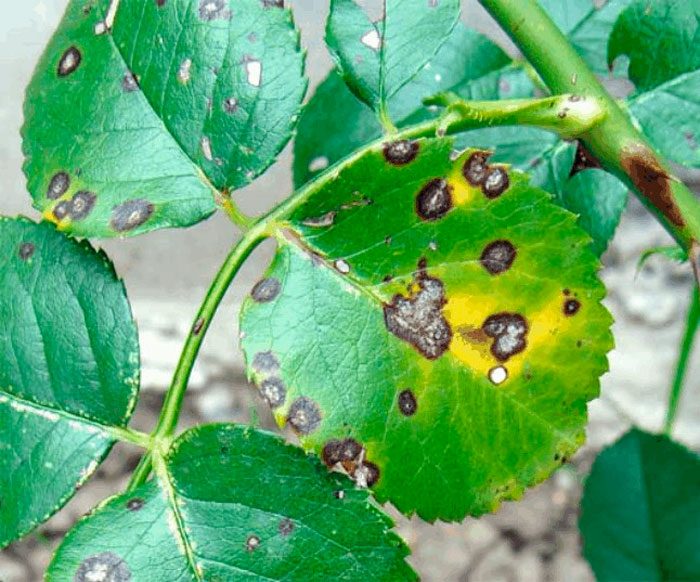
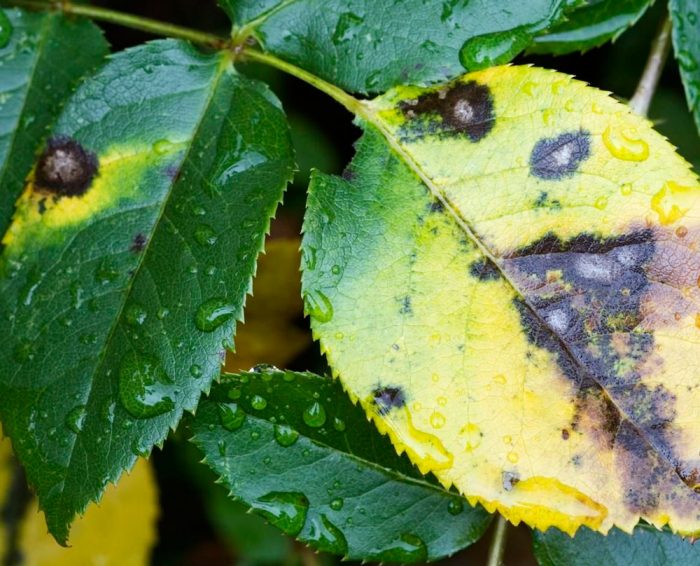
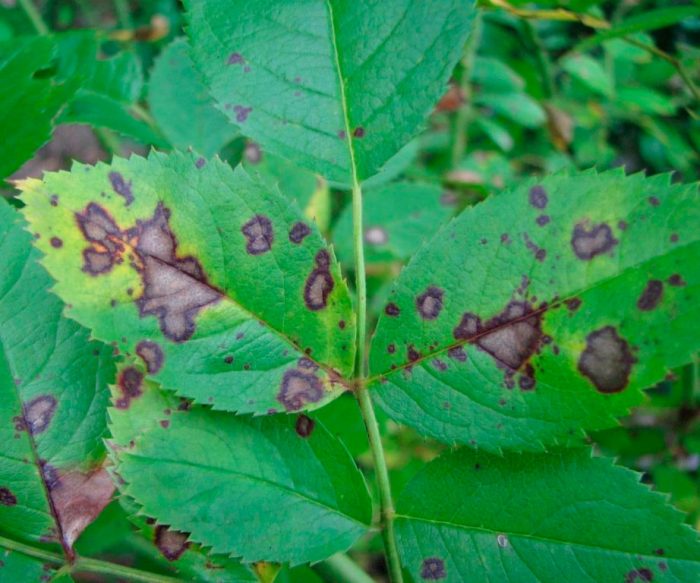
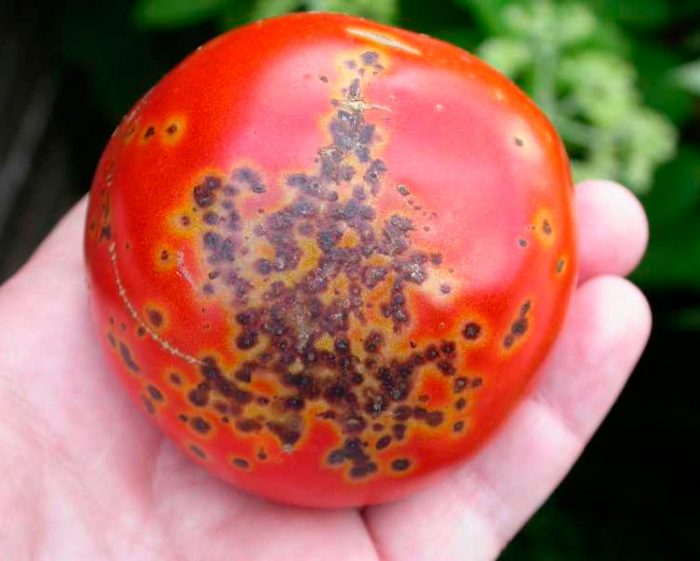

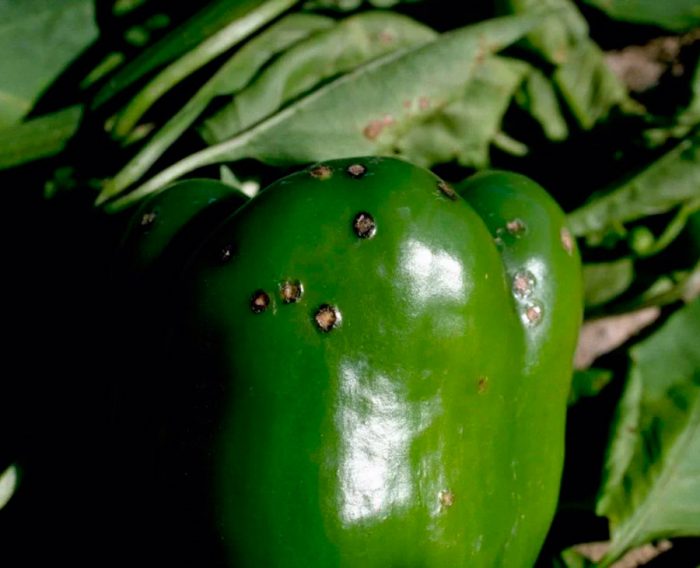
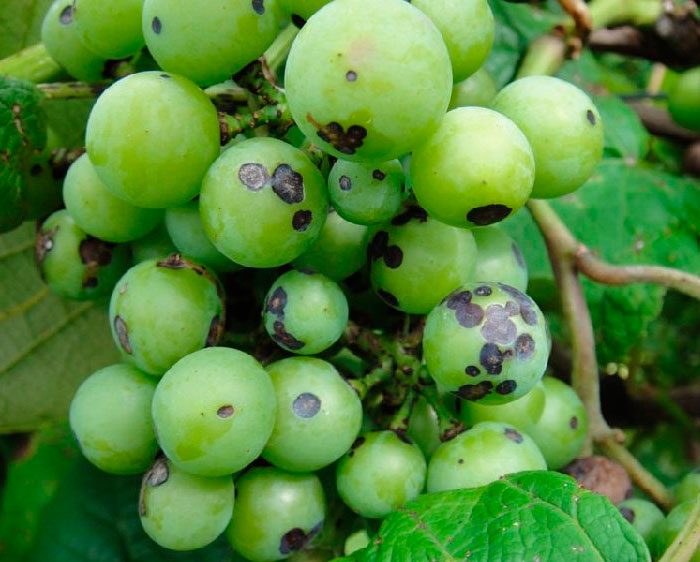
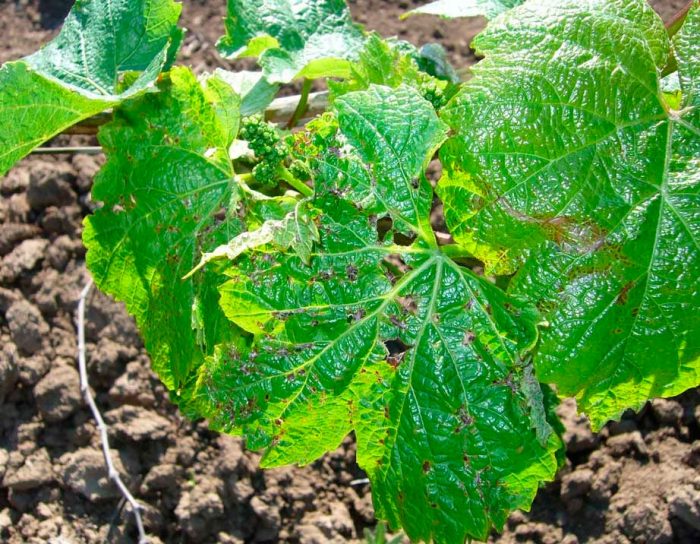
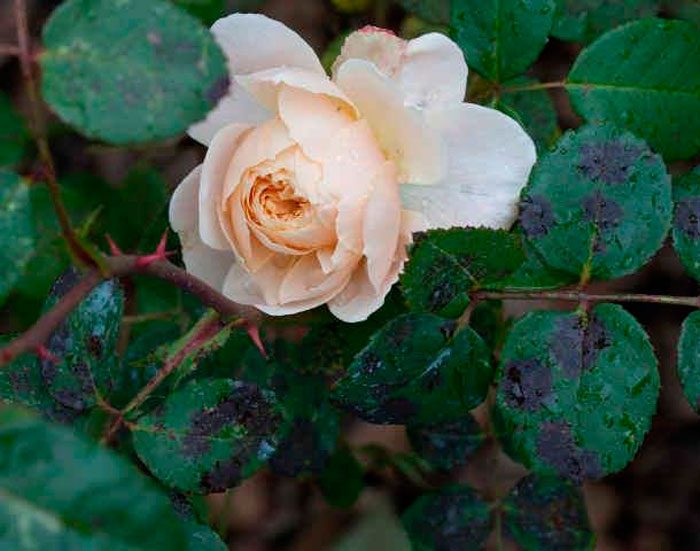
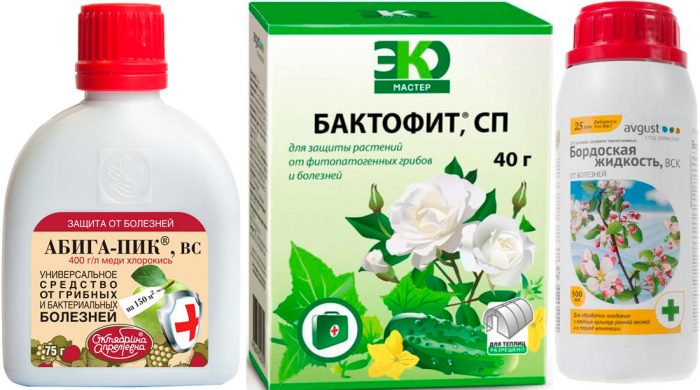


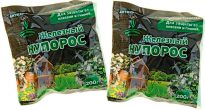



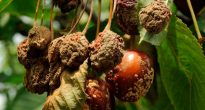
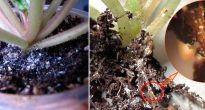


Black spot is very common and destroys a large number of plants and fruits. Your advice will help many gardeners - gardeners.